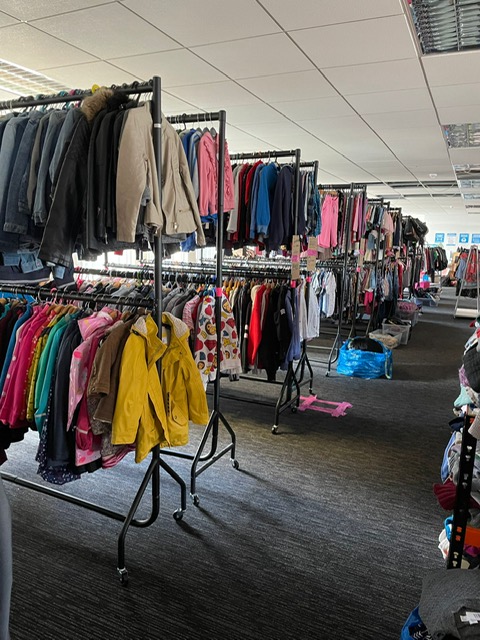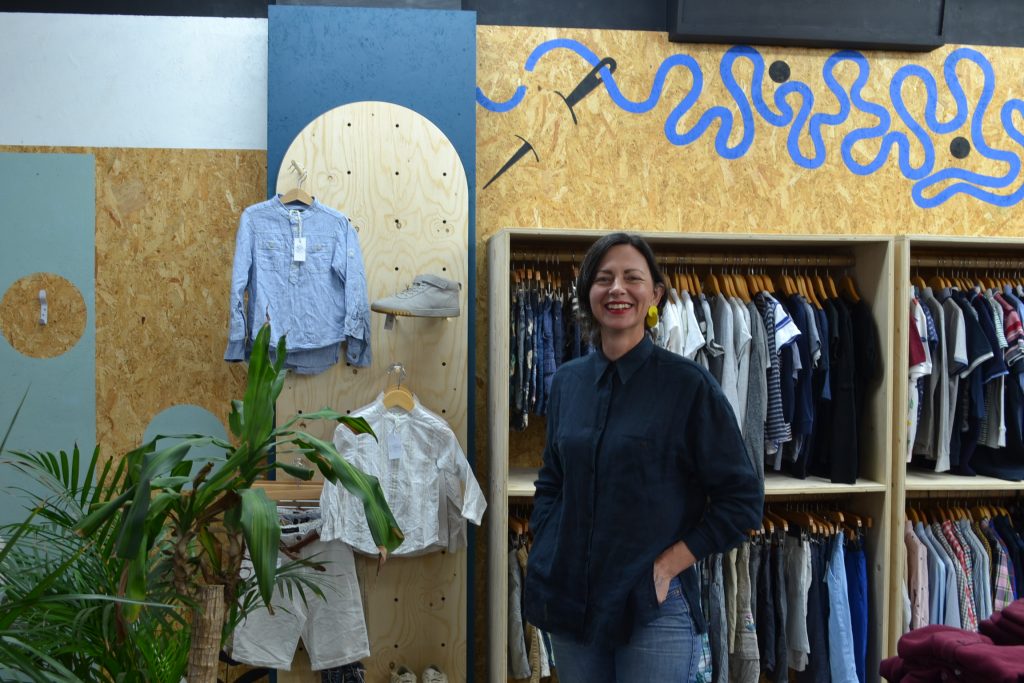
Tackling clothing’s impact on the planet
ApparelXchange is a social enterprise dedicated to reuse, repair and recycling for childrenswear. Their mission is to reduce the impact of clothing on the planet, while supporting families. We spoke to its founder, Izzie Eriksen, to find out more.

For those of us new to ApparelXchange, can you explain what the organisation does and why you decided to set up it up?
ApparelXchange is a social circular enterprise dedicated to the social and environmental benefits of reusing children’s clothing. I’ve worked in the social and circular economy for many years, but it was really as a mum, seeing how quickly my kids grew out of perfectly usable clothing, that I started seeing the potential for massive environmental and social benefits in helping people to buy and use preloved clothes. We started by focussing on school uniform, which is often a real financial stretch for families to cover if they’re buying new and have diversified into all types of clothing and footwear from there.
We take donations of all kinds of clothing and footwear for kids aged 4-16 from individuals, schools and other organisations, then clean and quality check it for reuse at our big city-centre warehouse. We give free bespoke parcels of high-quality preloved clothing away to families who need extra support which enables young people to fully participate at school, and in social activities including sports – we have great partnerships with sports clubs and are keen to extend these.
We are a circular social enterprise, so we also sell to families who can afford it and who are motivated by our environmental and social mission, and low cost, which is of course particularly important in the current financial climate. At the moment, post-covid, we’re selling entirely online but we have exciting plans for a retail space afoot…
How does clothing link to the climate?
The clothing industry has a massive impact on people and the planet. Making clothes requires huge amounts of raw materials, water, and energy, driving climate change, destroying habitats and polluting our water system. Demand for raw textile materials is expected to triple by 2030, and 73% of the world’s clothing is landfilled or incinerated. By raising awareness of this among families and young people, we are empowering them to reduce clothing going to landfill by donating and repairing and buying preloved clothing. This means we can reduce the demand for the water, energy and raw materials that is driving climate change.
There is such enormous potential for carbon savings in clothing reuse. For example, we have sold or gifted around 5,000 items of clothing in the last 12 months. If we assume that each item bought from us is one less item bought new, we estimate that we have saved the equivalent in carbon emissions of taking 6.7 petrol cars off the road. And that’s just one organisation in one city in the UK, working with clothing for school-age kids, so the potential is huge.
ApparelXChange runs workshops and classes as well as going into schools and raising awareness about clothing reuse and slow fashion – are these different activities important to your work?
Yes, these activities are a crucial part of our overall mission, which is ultimately to drive profound behaviour change so that ‘second-hand’ becomes ‘first choice’, and when people do buy new children’s clothing they are really well-informed about the choices they are making. Engaging directly with young people in particular is so important because they are the generation who will be most affected by – and therefore are most motivated to address – climate change. And we are inspired by their creativity! Young people’s love of clothing and fashion, and the way they see buying second-hand as a way of expressing their individuality can be really motivating.

Are there any other initiatives you’ve been inspired by?
We have an amazing partnership with the great people at Merry-Go-Round, who were established a few years before we were and work with baby clothes, toys, equipment and essentials. Other fantastic slow fashion organisations, from global activists like Fashion Revolution, to more local initiatives like ReMode in Paisley, or R:Evolve Recycle, are constantly coming up with inspiring and creative ways of changing how we think about fashion and clothing’s impact.
What are your most popular items?
Uniform is of course a staple and we have customers who’ve been kitting their kids out for school from us for years. But we also have an amazing array of casual and particularly high-quality sportswear, branded hoodies, sports t-shirts and footwear flies off our virtual shelves!
Because we have clothing trends which span many seasons, the choice is huge compared to high street or online brands. There is something for everyone.
For products like tools and IT equipment, a sharing approach encourage investment in higher quality, longer lasting goods – is the same true for clothing?
There are some great clothes for any age, well made, timeless designs which means they last for a long time. These last and become key elements of a capsule wardrobe – but young people grow quickly, so investing in pieces which last longer is probably not as practical as they grow out and they could be unaffordable/uneconomical unless you have lots of children to hand the pieces down to.
There are several high street brands which make some great quality clothing, which if looked after repaired and washed at the right temperature will last for many children.
Our next development is our membership model, where we will be offering a shared wardrobe of quality items which will see clothing having many lifecycles. It will compromise of lots of brands too, it is our intention to make sure we get the most wear regardless of which brand it came from.
Can you give us some tips for how to make our clothing last longer? What’s a good way to start if you are new to reuse and repair of clothing?
There are masses of brilliant videos online that show simple repair techniques in a really accessible way. We love Repair What You Wear, who have mending tutorials online and pdfs to download. Or get together with a friend who has some skills to share! Just sewing a button back on can make a pair of trousers usable again and is so satisfying to achieve.
What advice would you give to someone looking to set up their own slow fashion enterprise?
It’s a really exciting time to be getting involved with slow fashion at the moment, particularly in Scotland, and there are lots of great organisations to offer inspiration – there is still such a long way to go to change behaviour and offer real solutions to all our communities.
If you have a great idea and the passion to make it happen, then it’s definitely worth going for it. You’ll find yourself soon surrounded by other people with the same values, with expertise to share or energy to lend.
It has been hard work for us to get to this point, so think about complementing or collaborating, if we work together and build on our strengths then we will succeed.
What could be done to encourage more clothing reuse across Scotland?
Integrating reuse of clothing into the school day, local authority policy and making it even easier for people to donate would go some of the way there. But we really need every person to understand the impacts of clothing and take responsibility for what they buy and how they think about the clothing at the end of life.
It’s about autonomy, all people have a role to play in slowing down climate change. We are here to support them to understand clothing’s impact on the planet and take action.
